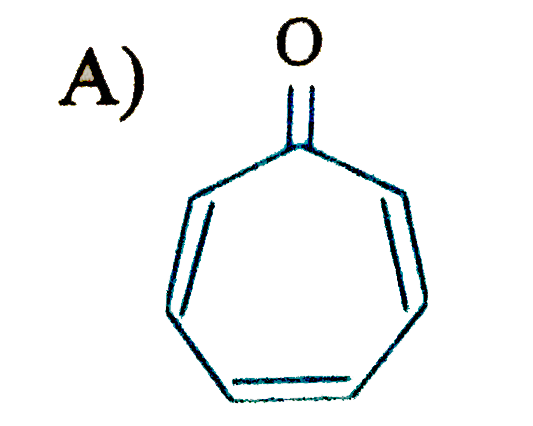In Huckel's (4n+2)π rule for aromaticity, 'n' represents
Number of carbons atoms
Number of rings
Whole number
Fractional number (or) integer (or) zero
The correct Answer is:C
π electrons=2,6,10,14
Topper's Solved these Questions
- BENZENEBOOK - NARAYNACHAPTER - BENZENEEXERCISE - Level-2 (CW)
9 Videos
- BENZENEBOOK - NARAYNACHAPTER - BENZENEEXERCISE - Level-3
23 Videos
- BENZENEBOOK - NARAYNACHAPTER - BENZENEEXERCISE - Level-6
121 Videos
- ATOMIC STRUCTUREBOOK - NARAYNACHAPTER - ATOMIC STRUCTUREEXERCISE - All Questions
685 Videos
- CARBONYL COMPOUNDSBOOK - NARAYNACHAPTER - CARBONYL COMPOUNDSEXERCISE - LEVEL -VI
99 Videos
Similar Questions
Knowledge Check
For any compound to be aromatic, compound should follow a cartain rule known as Huckel's rule. According to Huckel's rule of aromaticity a). Compound should be cyclic
b). Compound should be planar and conjugated
c). Compound should have (4n+2)πe(−)
where n=0,1,2,3, . . . . integer number.
Q. Identiy number of delocalised π-electrons in pyridineA8B6C4D10For any compound to be aromatic, compound should follow a cartain rule known as Huckel's rule. According to Huckel's rule of aromaticity a). Compound should be cyclic
b). Compound should be planar and conjugated
c). Compound should have (4n+2)πe(−)
where n=0,1,2,3, . . . . integer number.
Q. Identify the compound while have maximum dipole moment.A B
B C
C D
D
The Huckel rule for aromaticity connects aromatic stability (High delocalization energy or high resonance energy) with the presence of ____π electrons in a closed shell.
A(4n)B4n+1C(4n+2)D(4n+3)
For any compound to be aromatic, compound should follow a given set of rule known as Huckel's rule
According to Huckel's rule of aromaticy :
(a) compound should be cyclic
(b) compounds shoulds be planar and conjugated .
(c) compound should have (4n+2)πe−
where n=0, 1, 2, 3.... integer number .
Which of the following is not an aromatic compound ?
View SolutionFor any compound to be aromatic, compound should follow a given set of rule known as Huckel's rule
According to Huckel's rule of aromaticy :
(a) compound should be cyclic
(b) compounds shoulds be planar and conjugated .
(c) compound should have (4n+2)πe−
where n=0,1,2,3....∫e≥rνmber.<br>Identifyνmberof∂ocalisedpi-electron in pyridine : ltBRgt
View SolutionFor any compound to be aromatic, compound should follow a given set of rule known as Huckel's rule
According to Huckel's rule of aromaticy :
(a) compound should be cyclic
(b) compounds shoulds be planar and conjugated .
(c) compound should have (4n+2)πe−
where n=0, 1, 2, 3.... integer number .
Among the following which is a non-planer compound ?
View SolutionFor any compound to be aromatic, compound should follow a given set of rule known as Huckel's rule
According to Huckel's rule of aromaticy :
(a) compound should be cyclic
(b) compounds shoulds be planar and conjugated .
(c) compound should have (4n+2)πe−
where n=0, 1, 2, 3.... "integer number" .
"Identify the compound which have maximum dipole moment" :
View SolutionWhich of the following meet the requirements of the Huckel rule for aromatic compound
View Solution

